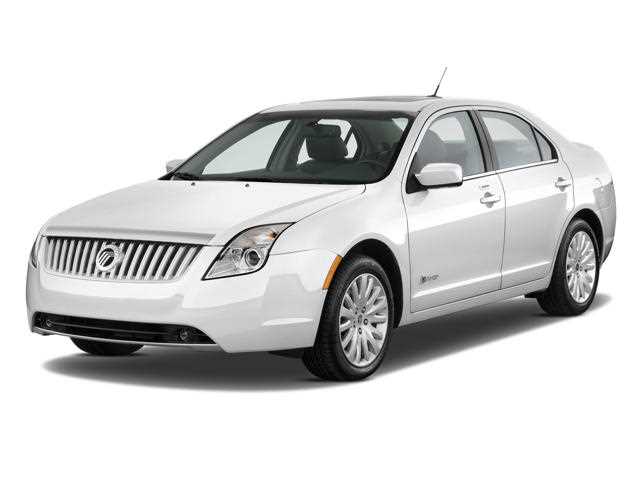
Discover the Legacy of Suzuki
Since its inception in 1909, Suzuki has played a pivotal role in shaping the landscape of Japanese automotive history. With a commitment to innovation, quality, and performance, Suzuki has become a household name synonymous with excellence.
From its humble beginnings as a loom manufacturer, Suzuki quickly transitioned into the world of automobiles, revolutionizing the industry with groundbreaking designs and cutting-edge technology. With each passing decade, Suzuki has continued to push the boundaries of what’s possible, leaving an indelible mark on the automotive landscape.
Throughout the years, Suzuki has introduced a wide range of iconic models that have captivated the hearts and minds of drivers around the world. From the nimble and versatile Swift to the rugged and adventurous Jimny, Suzuki has consistently delivered vehicles that embody the spirit of Japanese engineering.
But it’s not just about the cars themselves – Suzuki’s commitment to customer satisfaction and unparalleled service sets them apart from the competition. With a global network of dealerships and service centers, Suzuki ensures that every customer receives the support they need throughout their ownership experience.
As we embark on this journey through time, we invite you to discover the rich legacy of Suzuki. From their early days as a loom manufacturer to their current status as a global automotive powerhouse, Suzuki’s dedication to excellence has remained unwavering. Join us as we explore the milestones, innovations, and achievements that have defined Suzuki’s place in Japanese automotive history.
Suzuki’s Early Beginnings
In 1909, a young inventor named Michio Suzuki founded a small loom factory in Hamamatsu, Japan. His goal was to provide affordable, high-quality weaving machines to the local silk industry. Little did he know that this humble beginning would mark the start of a remarkable journey in the automotive industry.
Suzuki’s innovative spirit and dedication to excellence soon led him to diversify his product line. In the 1930s, the company began manufacturing small cars, motorcycles, and outboard motors. These early ventures laid the foundation for Suzuki’s future success as a leading player in the Japanese automotive market.
During World War II, Suzuki’s factories were converted to produce military vehicles and weapons. This experience gave the company valuable insights into automotive engineering and production, positioning them for a post-war boom in the Japanese economy.
After the war, Suzuki quickly adapted to the changing needs of the Japanese population. They introduced their first motorized bicycle, the “Power Free,” in 1952. This two-wheeled vehicle became immensely popular and set the stage for Suzuki’s expansion into the motorcycle market.
By the 1960s, Suzuki had established itself as a major player in the motorcycle industry. Their lightweight, affordable bikes appealed to a wide range of consumers, and Suzuki motorcycles became synonymous with speed and performance. This success laid the groundwork for Suzuki’s entry into the four-wheeled market.
In 1966, Suzuki introduced their first mass-produced car, the Suzuki Fronte 800. This compact, economical vehicle was a hit with consumers and helped establish Suzuki as a serious competitor in the automotive industry. Since then, Suzuki has continued to innovate and produce a wide range of vehicles that cater to the needs and preferences of customers around the world.
Establishment and Early Years
Suzuki was founded in 1909 by Michio Suzuki, a Japanese entrepreneur who had a passion for machinery. The company originally started as a loom manufacturer, but quickly expanded into other areas of production.
During its early years, Suzuki faced many challenges, including competition from established companies and economic downturns. However, the company persevered and continued to innovate, eventually finding success in the automotive industry.
One of the key milestones in Suzuki’s early years was the development of its first motor vehicle in 1955, the Suzuki Suzulight. This compact car was designed to meet the needs of the post-war Japanese market, which was recovering from the devastation of World War II.
By focusing on small, fuel-efficient cars, Suzuki was able to carve out a niche in the automotive industry and establish itself as a leading player in the Japanese market. The company’s commitment to quality and affordability made its vehicles popular among Japanese consumers, and Suzuki quickly gained a reputation for reliability and innovation.
Throughout its early years, Suzuki continued to expand its product line, introducing new models and improving upon existing ones. The company’s dedication to research and development allowed it to stay ahead of the competition and adapt to changing market demands.
Today, Suzuki’s early years serve as a testament to the company’s resilience and determination. The establishment and growth of Suzuki during this period laid the foundation for its future success in the automotive industry.
The Founding of Suzuki Motor Corporation
In 1909, Michio Suzuki, a Japanese entrepreneur, established Suzuki Loom Works, a company that specialized in producing weaving looms. With a vision to diversify his business, Suzuki decided to venture into the automotive industry.
In 1937, Suzuki Motor Corporation was founded and the company began manufacturing small cars. The first model, known as the Suzuki Suzulight, was introduced in 1955. It was a compact car that quickly gained popularity for its affordability and fuel efficiency.
Throughout the years, Suzuki Motor Corporation has continued to innovate and expand its product line. Today, the company offers a wide range of vehicles including sedans, SUVs, motorcycles, and outboard motors.
Suzuki’s commitment to quality and innovation has earned the company numerous accolades and a loyal customer base. With a focus on sustainability, Suzuki has also made significant strides in developing eco-friendly vehicles.
As Suzuki Motor Corporation celebrates over 100 years of success, the company remains dedicated to providing reliable and efficient transportation solutions for customers around the world.
The First Suzuki Motorcycles

In the early 1900s, the Suzuki company began its journey in the world of motoring. The company’s founder, Michio Suzuki, had a vision to create efficient and reliable transportation for people. This led to the development of the first Suzuki motorcycles.
Suzuki’s first motorcycle, the “Power Free,” was introduced in 1952. It was a motorized bicycle that featured a two-stroke engine and a unique double-sprocket system. This innovative design allowed riders to pedal the bike with the engine off, giving them the flexibility to use it as a regular bicycle.
The success of the Power Free led Suzuki to further expand its motorcycle lineup. In 1954, the company introduced the Colleda, its first full-fledged motorcycle. The Colleda featured a 125cc engine and quickly gained popularity among motorcycle enthusiasts.
As the years went by, Suzuki continued to innovate and refine its motorcycle offerings. In 1976, the company introduced the GS750, a groundbreaking model that featured a four-cylinder engine and advanced features such as disc brakes and a five-speed transmission. This marked a significant milestone in Suzuki’s history and solidified its reputation as a leader in the motorcycle industry.
Today, Suzuki continues to produce a wide range of motorcycles that cater to different riding styles and preferences. From sport bikes to cruisers, Suzuki motorcycles are known for their performance, reliability, and cutting-edge technology.
Expansion into Automobile Manufacturing

Suzuki’s journey in the Japanese automotive industry began in the late 1930s, when the company made a strategic decision to enter the automobile manufacturing sector. This move was motivated by the increasing demand for affordable and reliable transportation options in Japan.
With a strong foundation in producing looms for the textile industry, Suzuki applied its expertise in metalworking and precision engineering to the production of compact cars. The company’s first foray into automobile manufacturing was the development of a small prototype vehicle, known as the “Suzulight.”
The Suzulight, introduced in 1955, quickly gained popularity for its compact size, fuel efficiency, and affordability. This early success paved the way for Suzuki’s expansion into the mass production of automobiles.
Throughout the following decades, Suzuki continued to innovate and introduce new models to meet the evolving needs of the Japanese market. The company’s commitment to producing high-quality vehicles at affordable prices earned it a loyal customer base and solidified its position in the Japanese automotive industry.
Today, Suzuki is known for its diverse lineup of vehicles, including compact cars, SUVs, and motorcycles. The company’s legacy as a pioneer in the Japanese automotive industry remains strong, as it continues to uphold its commitment to innovation, quality, and customer satisfaction.
Suzuki’s First Passenger Car
Introducing Suzuki’s first passenger car, a groundbreaking addition to their automotive lineup. This innovative vehicle combines sleek design, advanced technology, and exceptional performance to provide an unforgettable driving experience.
Featuring a powerful engine and responsive handling, the Suzuki’s first passenger car delivers impressive speed and agility on the road. Whether you’re navigating city streets or exploring open highways, this car offers a thrilling ride that will keep you engaged and excited.
Designed with comfort in mind, the interior of Suzuki’s first passenger car offers a spacious and luxurious cabin. The seats are ergonomically designed to provide maximum support and relaxation, ensuring a pleasant journey for both the driver and passengers.
But it’s not just about comfort and performance – safety is a top priority for Suzuki. This car is equipped with the latest safety features and technology, including advanced driver-assistance systems and a comprehensive airbag system, to give you peace of mind on every drive.
With its sleek design, powerful performance, luxurious interior, and cutting-edge safety features, Suzuki’s first passenger car is set to revolutionize the automotive industry. Experience the future of driving by getting behind the wheel of this remarkable vehicle today.
Innovations in Compact Car Design
Suzuki has a long history of pioneering innovations in compact car design. From the early days of manufacturing motorcycles to becoming one of the leading automotive companies in Japan, Suzuki has consistently pushed the boundaries of what is possible in compact car design.
One of Suzuki’s most notable innovations is the introduction of the lightweight and fuel-efficient engine. By utilizing advanced engineering techniques, Suzuki has been able to develop engines that deliver impressive performance while being eco-friendly.
Another key innovation from Suzuki is the incorporation of advanced safety features in their compact cars. From the early days of introducing seat belts and airbags to the latest technologies like lane departure warning systems and automatic emergency braking, Suzuki has always prioritized the safety of their customers.
Suzuki is also known for their innovative interior design. Despite the compact size of their cars, Suzuki has managed to create spacious and comfortable interiors. With clever storage solutions and ergonomic seating, Suzuki cars offer a comfortable and enjoyable driving experience.
Furthermore, Suzuki has been at the forefront of incorporating advanced technology into their compact cars. From infotainment systems with smartphone integration to advanced driver-assistance systems, Suzuki cars are equipped with the latest technology to enhance the driving experience.
Overall, Suzuki’s innovations in compact car design have revolutionized the automotive industry. With their focus on fuel efficiency, safety, interior design, and advanced technology, Suzuki continues to set the bar high for compact cars and provide customers with exceptional vehicles.
Suzuki’s Influence on Japanese Automotive Industry
Suzuki has played a significant role in the development and growth of the Japanese automotive industry. With its innovative designs, reliable performance, and affordable prices, Suzuki has become a prominent player in the global market.
One of Suzuki’s key contributions to the industry is its focus on producing compact, fuel-efficient vehicles. The company has been at the forefront of developing technologies that maximize fuel efficiency without compromising on performance. This has made Suzuki cars popular choices for consumers who value sustainability and cost-effectiveness.
Suzuki has also been a pioneer in the production of off-road vehicles and motorcycles. Its line of rugged and versatile SUVs and motorcycles have gained a loyal following around the world. Suzuki’s expertise in creating vehicles that can handle challenging terrains has made it a trusted brand for adventure enthusiasts and outdoor lovers.
Furthermore, Suzuki has been a driving force in promoting the use of alternative fuels and electric vehicles. The company has invested heavily in research and development to create eco-friendly vehicles that reduce emissions and help combat climate change. This commitment to sustainability has earned Suzuki recognition as a leader in the green automotive revolution.
In conclusion, Suzuki’s influence on the Japanese automotive industry is undeniable. From its commitment to fuel efficiency and off-road capabilities to its dedication to sustainable and eco-friendly transportation, Suzuki has left a lasting impact on the industry. As the company continues to innovate and adapt to changing market demands, it is poised to shape the future of the automotive industry even further.
The Shift towards Fuel Efficiency
In recent years, there has been a significant shift in the automotive industry towards fuel efficiency. With growing concerns about climate change and the need to reduce carbon emissions, consumers are increasingly looking for vehicles that are eco-friendly and economical to run.
Suzuki has been at the forefront of this shift, pioneering innovative technology and engineering solutions to deliver vehicles that offer exceptional fuel efficiency without compromising on performance. From the early days of the Suzuki Fronte in the 1970s to the present-day Suzuki Swift, the company has continuously refined its engines and streamlined its designs to maximize fuel economy.
One of Suzuki’s key contributions to fuel efficiency is its development of lightweight and aerodynamic vehicles. By using high-strength steel and aluminum alloys, Suzuki has been able to reduce the weight of its vehicles, resulting in improved fuel efficiency. Additionally, the company has invested in wind tunnel testing and advanced computer simulations to optimize the aerodynamics of its vehicles, reducing drag and further enhancing fuel economy.
Suzuki has also been a pioneer in the development of hybrid and electric vehicles. The Suzuki Solio Hybrid, for example, combines a small gasoline engine with an electric motor to deliver impressive fuel efficiency, while the Suzuki Hustler EV is a fully electric vehicle that produces zero emissions. These vehicles not only reduce fuel consumption but also contribute to a cleaner and more sustainable environment.
As the world continues to prioritize fuel efficiency and environmental sustainability, Suzuki remains committed to pushing the boundaries of automotive engineering and delivering vehicles that meet the evolving needs of consumers. Whether through advancements in engine technology, lightweight design, or the development of alternative powertrains, Suzuki is leading the way towards a greener future.
Impact on the Japanese Market
Suzuki has had a significant impact on the Japanese automotive market since its founding in 1909. With a focus on producing small, affordable vehicles, Suzuki quickly gained popularity among Japanese consumers.
One of Suzuki’s key contributions to the Japanese market was its development of the kei car, a category of small cars with engines of 660cc or less. These compact vehicles became incredibly popular in Japan due to their affordability and fuel efficiency.
Suzuki’s introduction of the Suzuki Carry, a small commercial vehicle, also had a major impact on the Japanese market. The Suzuki Carry proved to be a reliable and versatile option for businesses, offering a compact size and efficient performance.
Over the years, Suzuki continued to innovate and introduce new models to the Japanese market. The Suzuki Swift, for example, became a top-selling compact car known for its stylish design and nimble handling.
Today, Suzuki remains a prominent player in the Japanese automotive market, offering a wide range of vehicles to suit different needs and preferences. From compact cars to SUVs and motorcycles, Suzuki continues to provide reliable and affordable transportation options for Japanese consumers.
Technological Advancements in Safety
Suzuki is renowned for its continuous commitment to improving vehicle safety through innovative technological advancements. Through years of research and development, Suzuki has introduced a range of safety features that strive to protect both drivers and passengers.
One such advancement is the Intelligent Vehicle Stability Control (IVSC) system, which uses sensors to monitor the vehicle’s stability and make automatic adjustments to ensure optimal handling. This system helps prevent skidding and loss of control, making driving safer and more secure.
Suzuki has also implemented the Advanced Forward Detection System (AFDS) in its vehicles, which uses radar and camera technology to detect potential obstacles and hazards on the road. This system provides the driver with real-time warnings and can even apply the brakes autonomously to prevent collisions.
Another notable safety feature is the Adaptive Cruise Control (ACC) system, which uses sensors to detect the speed and distance of vehicles ahead. The ACC system can automatically adjust the vehicle’s speed to maintain a safe distance from the vehicle in front, reducing the risk of rear-end collisions.
In addition to these active safety features, Suzuki has also made significant advancements in passive safety. The company has developed a strong and lightweight body structure that absorbs impact energy in the event of a collision, reducing the risk of injury to occupants. Furthermore, Suzuki has implemented multiple airbags and seatbelt pre-tensioners in its vehicles to provide additional protection in case of an accident.
Overall, Suzuki’s dedication to technological advancements in safety has made its vehicles some of the safest on the road. With a combination of active and passive safety features, Suzuki continues to prioritize the well-being of its customers and ensure a safe driving experience for all.